Posted on November 26, 2018
By Shawn Douglas
Journal articles
Kristin Briney, Data Services Librarian at the University of Wisconsin - Milwaukee, gives a brief commentary on the perils of managing research data with inconsistent or non-standardized date formats. Tapping into the stories of statisticians and ecologists, Briney notes that despite being a more western, Gregorian-based system, the international standard ISO 8601 provides benefits of consistency, formatting, extensibility, and sorting. And while ISO 8601 doesn't play nicely with Microsoft Excel, the author provides several ways around the problem. She concludes that "ISO 8601 is a natural partner for research data management" and encourages other researchers to adopt the standard.
Posted on November 20, 2018
By Shawn Douglas
Journal articles
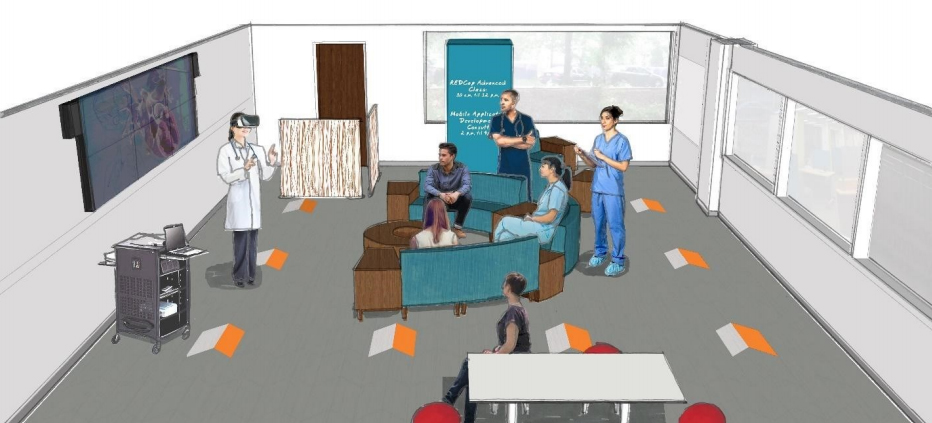
What can medical librarians do to better support patrons? How can clinical medicine and research librarians work together to foster an environment of improved research cycles and patient outcomes? Bardyn
et al. address these concerns and others through a demonstration of what the University of Washington's Translational Research and Information Lab (TRAIL) program has accomplished since its inception. The authors introduce basic concepts in clinical and translational research and then provide background and methodology for how they improved researcher-focused spaces, clinical research support services, and research data management services. They conclude that "initiatives like TRAIL are vital to supporting universities’ clinical data research efforts," noting that "[i]n uniting leading on-campus health sciences organizations, such initiatives build off the strengths of each partner" and encourage new skill sets to be developed to support cross-discipline research on campus.
Posted on November 12, 2018
By Shawn Douglas
Journal articles
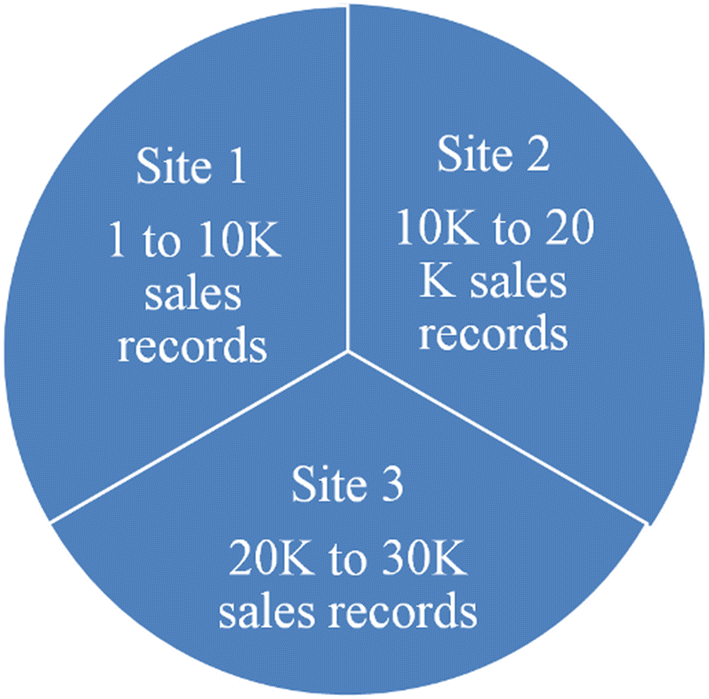
So much data is being collected from healthcare recipients, online banking users, online shoppers, and more, and what's worse is we're often letting companies do it without reading the terms of use, according to Rao
et al. in this 2018 paper. So what can be done to better preserve our data privacy? The authors first look at four major threats to our data privacy (surveillance, disclosure, discrimination, and personal embracement and abuse), then delve into seven different techniques for preserving the privacy of our data. Giving their pros and cons, the authors finally propose a hybrid solution revolving around the concept of the "data lake" and privacy preserving algorithms.
Posted on November 6, 2018
By Shawn Douglas
Journal articles
This brief article published in
Journal of Taibah University Medical Sciences in 2017 looks at public health informatics (PHI) from the perspective of a researcher in the Kingdom of Saudi Arabia. Aziz discusses the concept of PHI and then looks at the various surveillance systems within PHI. Later he delves into the challenges provided by paper-based systems and how electronic systems can alleviate them. He closes with a discussion of PHI in the Kingdom of Saudi Arabia and concludes that various "applications and initiatives are currently available to meet the growing needs for faster and accurate data collection methods" in the country, as well as around the world.
Posted on November 1, 2018
By Shawn Douglas
Journal articles
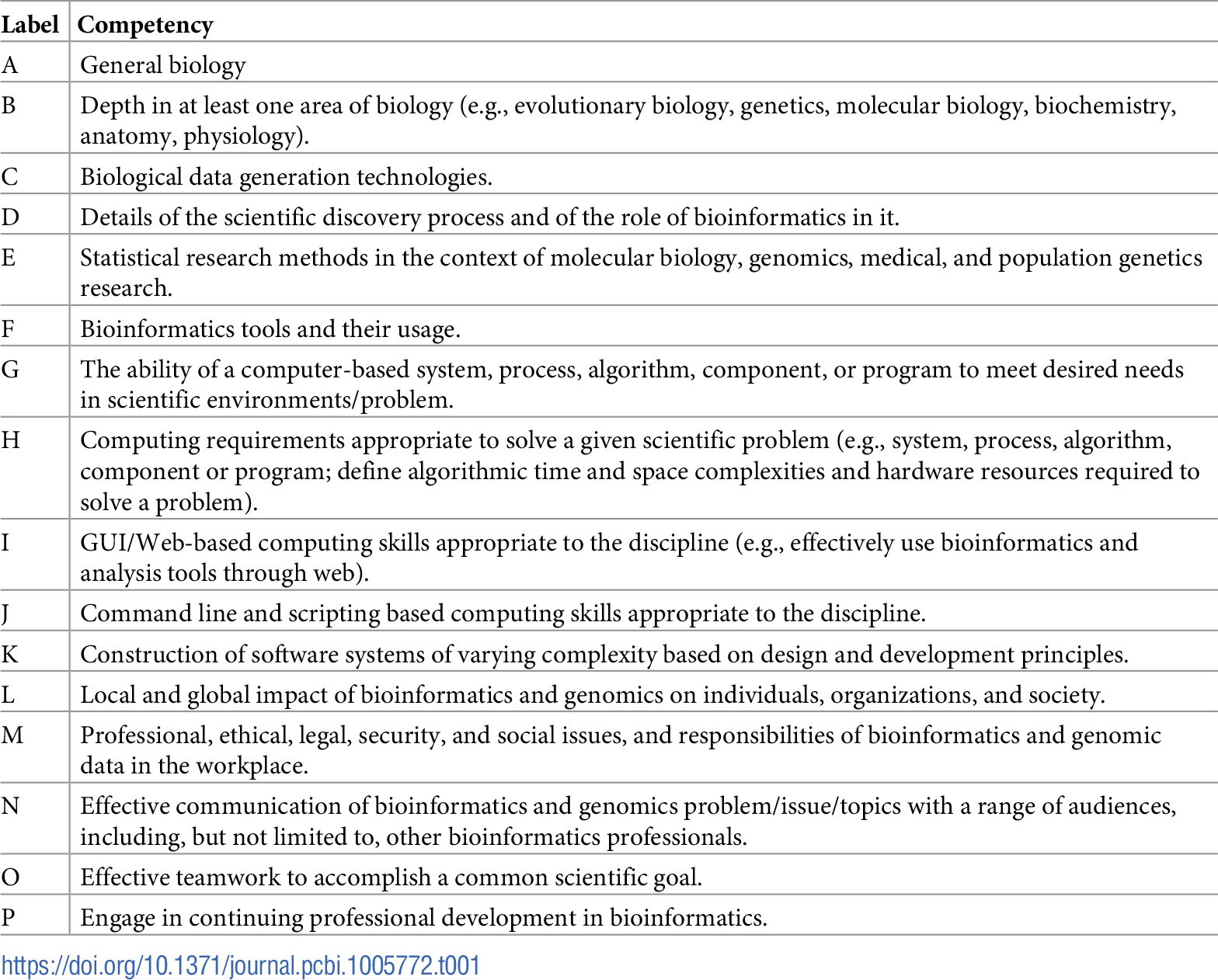
In this 2018 article by Mulder
et al., a broad collective of knowledge and experience is brought together to better shape the competencies required for a modern bioinformatics education program and their training contexts. Need is immense, yet methodologies are diverse, necessitating cooperation to refine core competencies for different groups. The authors describe the development of these competencies and then provide practical use cases for them. They conclude the competencies "provide a basis for the community of bioinformatics educators, despite widely divergent goals and student populations, to draw upon their common experiences in designing, refining, and evaluating their own training programs." However, they also caution that they shouldn't be viewed as "a prescription for a specific set of curricula or curricular standards."
Posted on October 23, 2018
By Shawn Douglas
Journal articles
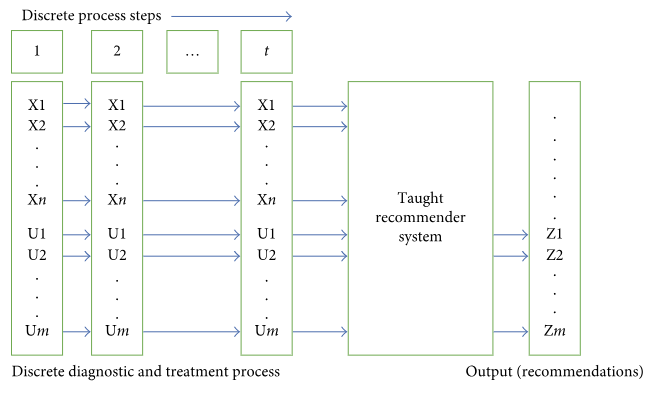
This paper by Malykh and Rudetskiy "discusses different approaches to building a clinical decision support system based on big data," with a focus on non-biased processing methods and their comparative assessments. After an in-depth analysis of methods and objectives, the authors present their findings from the clinical decision support data and their significance. They conclude that case-based and precedent-based approaches each have their advantages--including more accurate recommendations and faster system speeds--but are not without disadvantages. The authors suggest future research is needed to address "problems with optimization of provided metrics, compression of state descriptions, and construction of training procedures."
Posted on October 14, 2018
By Shawn Douglas
Journal articles
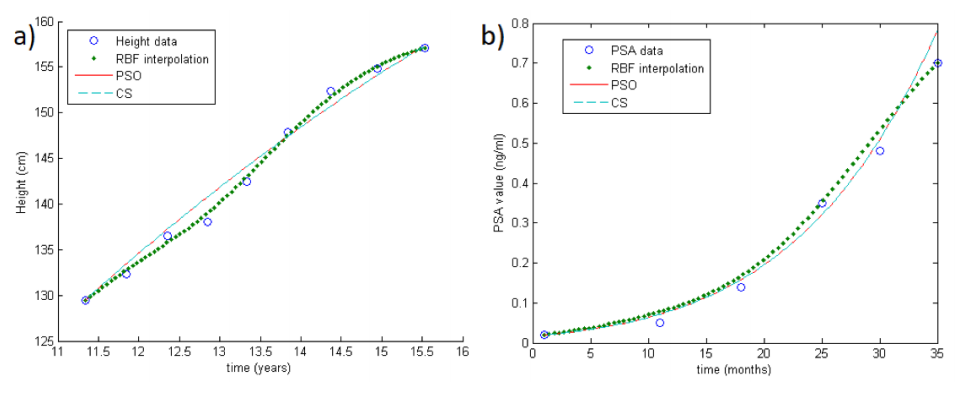
When it comes to longitudinal data, what analysis methods are we using today? How can they be applied to clinical data? In this 2018 paper, Stura
et al. look at, for example, repeated data from measuring patient reactions and behaviors to a therapy. yet when analyzing this type of data problems arise; "more robust statistical methods" are required. The authors combine several methods to develop a "numerical tool based on optimization methods coupled with interpolation techniques." They conclude that it provides several benefits, including output displayed as "a (continuous) growth curve, allowing the analysis of each growth function independently of the others. "
Posted on October 7, 2018
By Shawn Douglas
Journal articles
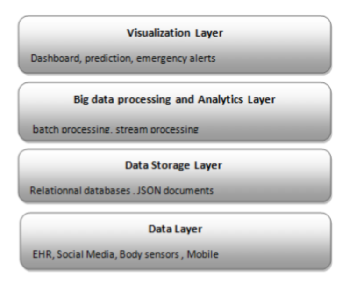
In this 2018 paper, El aboudi and Benhilma discuss the data management architectures of healthcare from the perspective of Northern Africa. As part of their discussion, the authors propose "an extensible big data architecture based on both stream computing and batch computing in order to enhance further the reliability of healthcare systems by generating real-time alerts and making accurate predictions on patient health condition." With such an architecture, they conclude that, when implemented well, the healthcare system may be "capable of handling the high amount of data generated by different medical sources in real time."
Posted on October 2, 2018
By Shawn Douglas
Journal articles
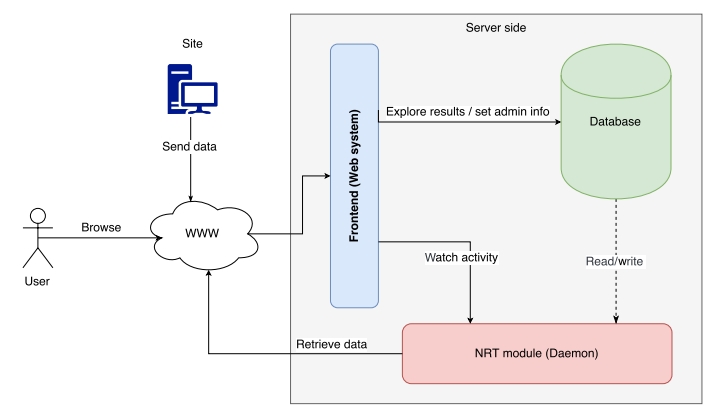
In this 2018 paper published in
Geoscientific Instrumentation, Methods and Data Systems, Fuertes
et al. describe and demonstrate the uses of CÆLIS, software designed to simplify the processing, management, and use of atmospheric particulate data. After describing the architecture and database model, the authors describe its functionality and real-world applications. The authors conclude that the automation the software brought to aerosol measurement and analysis has been significant, in that software "has reduced the number of human errors and allowed one to perform more in-depth and exhaustive analysis" while also allowing users to "perform queries and extract data in a fast and very flexible way."
Posted on September 24, 2018
By Shawn Douglas
Journal articles
In this 2018 paper published in
Research Ideas and Outcomes, Borghi
et al. of the University of California Curation Center discuss their suite of research data management (RDM) tools, Support Your Data. The tools "include a rubric designed to enable researchers to self-assess their current data management practices and a series of short guides which provide actionable information about how to advance practices as necessary or desired." Based on three key RDM trends, the researchers felt a need to provide a complementary set of tools for researchers to better address those trends. The conclude by offering several use cases for the tools and planning "next steps" for improving the tools.
Posted on September 18, 2018
By Shawn Douglas
Journal articles

Baseman
et al. "conducted an assessment of big data that is available to a [public health agency]—laboratory test results and clinician-generated notifiable condition report data—through its participation in a [health information exchange]" and published their results in
Informatics. They identified five major challenges to "secondary use of HIE data for meeting public health communicable disease surveillance needs" and then find ways to turn those challenges into opportunities for the public health system, ultimately optimizing it through various forms of big data analysis and management.
Posted on September 11, 2018
By Shawn Douglas
Journal articles
This brief article published in
Frontiers in Public Health takes a look at the collective management of genetic analysis techniques and "the ethico-legal frameworks" associated with forensic science and biomedicine. Krikorian and Vailly introduce the ethics and data collection methods of genetic material by police, noting how with new techniques the ethics have changed. Then they discuss the legal and political ramifications that go along with the ethics. They conclude that questions persist "about the conditions for the existence or for the absence of political controversies that call for further sociological investigations about the framing of the issue and the social and political logic at play." Additionally, they note "the need for promoting dialogue among the various professionals using this technology in police work" as well as "with healthcare professionals."
Posted on September 4, 2018
By Shawn Douglas
Journal articles
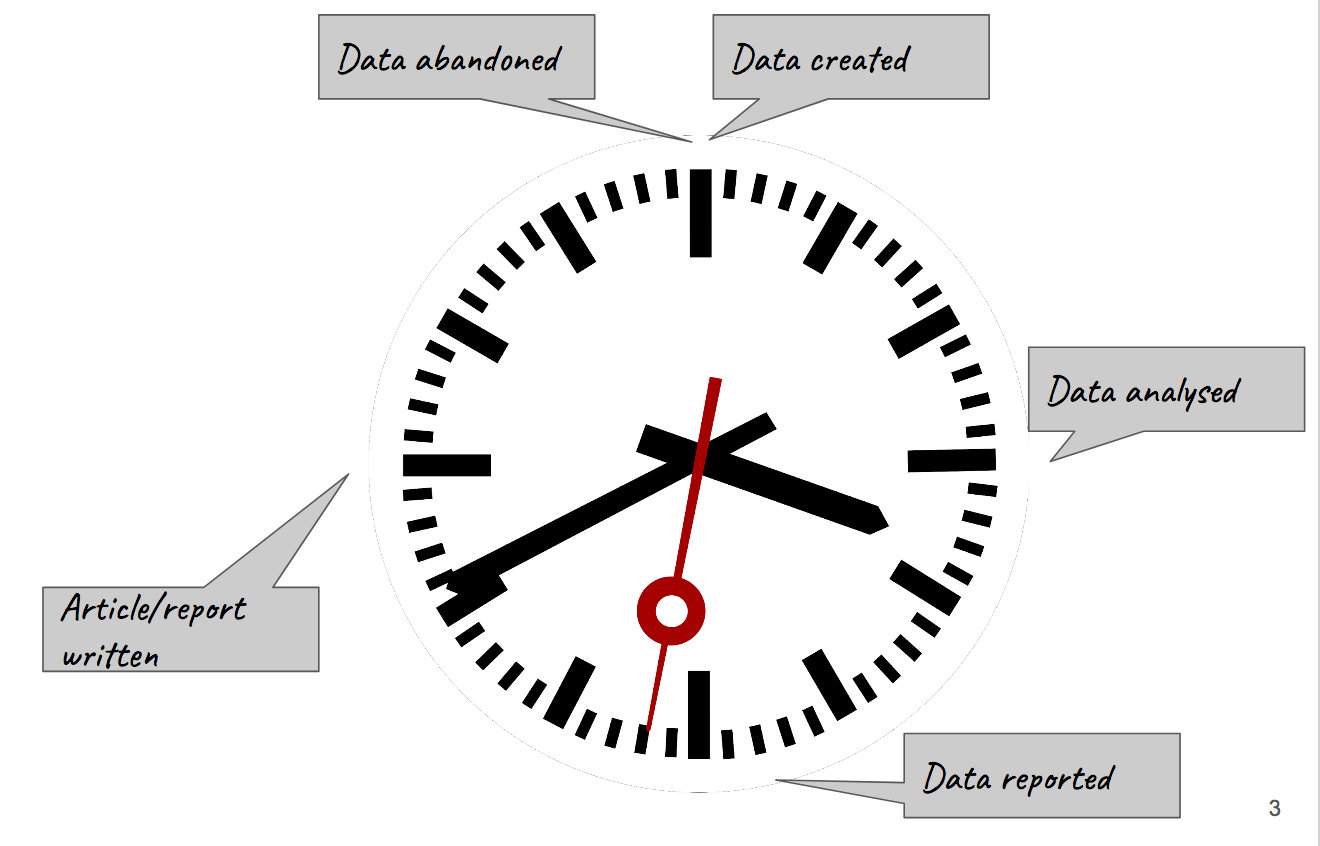
In this 2018 paper by Irawan and Rachmi, a proposed research data management plan (RDMP) for the university ecosystem is proposed. After introducing the concept of an RDMP and the layout, the authors describe seven major components to their plan, in the form of an assessment form: data collection; documentation and metadata; storage and backup; preservation; sharing and re-use; responsibilities and resources; and ethics and legal compliance. They conclude that the assessment form can help researchers "to describe the setting of their research and data management requirements from a potential funder ... [and] also develop a more detailed RDMP to cater to a specific project's environment."
Posted on August 27, 2018
By Shawn Douglas
Journal articles
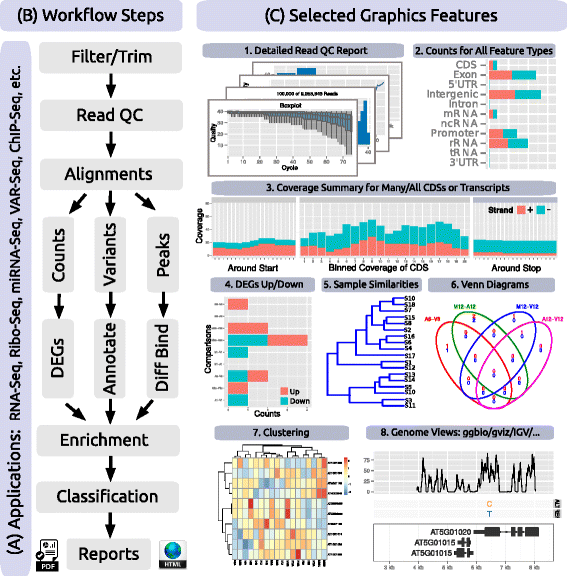
In this 2016 paper published in
BMC Bioinformatics, Backman and Girke discuss the R/Bioconductor package systemPipeR. Recognizing that the analysis of next-generation sequencing (NGS) data remains a significant challange, the authors turned to the R programming language and the Bioconductor environment to make workflows that were "time-efficient and reproducible." After giving some background and then discussing the development and implementation, they conclude that systemPipeR helps researchers "reduce the complexity and time required to translate NGS data into interpretable research results, while a built-in reporting feature improves reproducibility."
Posted on August 20, 2018
By Shawn Douglas
Journal articles
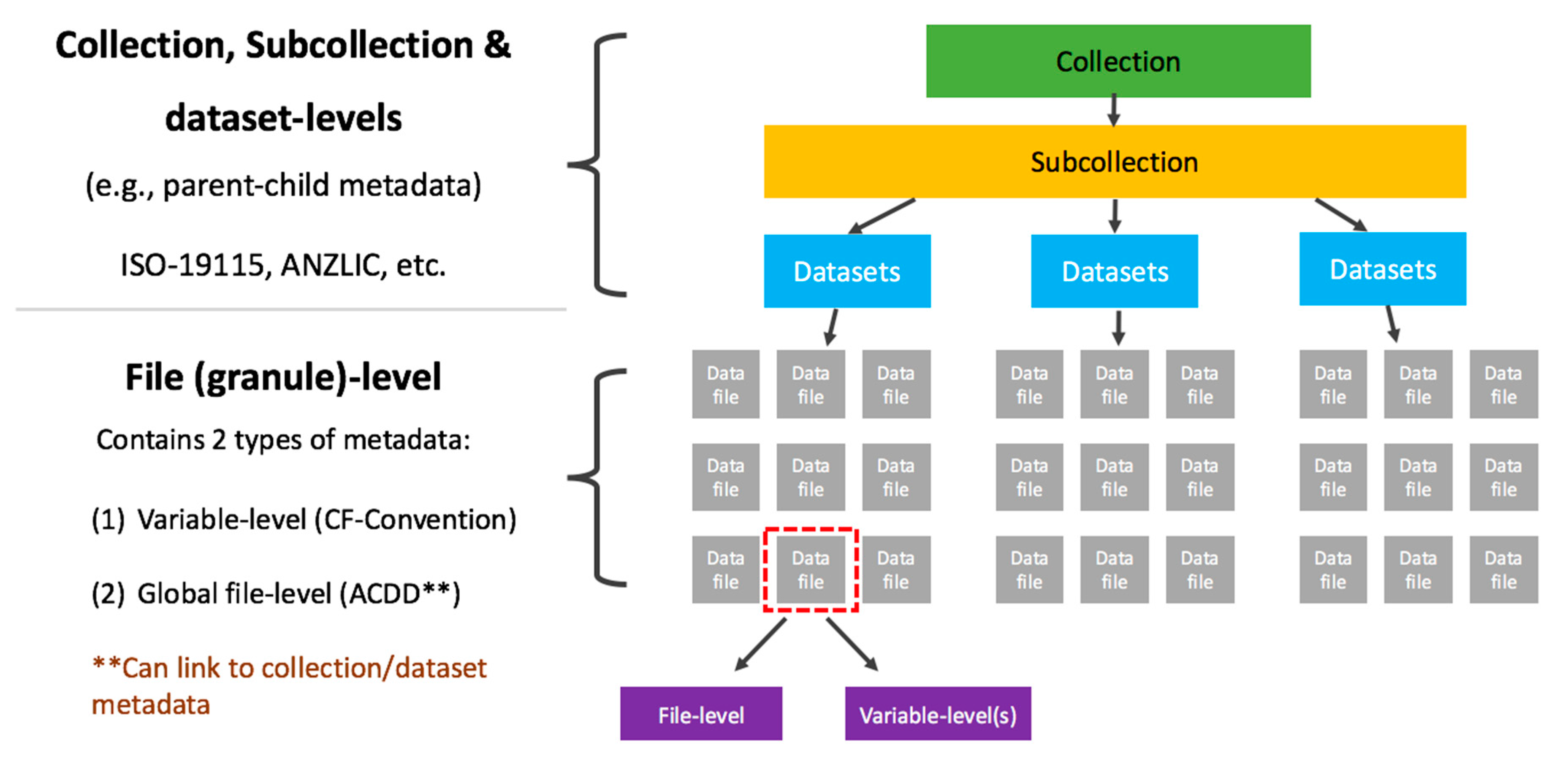
A data quality strategy (DQS) is useful for researchers, organizations, and others, primarily because it allows them "to establish a level of assurance, and hence confidence, for [their] user community and key stakeholders as an integral part of service provision." Evans
et al. of the Australian National University, recognizing this importance, discuss the implementation of their DQS at the Australian National Computational Infrastructure (NCI), detailing their strategy and providing examples in this 2017 paper. They conclude that "[a]pplying the DQS means that scientists spend less time reformatting and wrangling the data to make it suitable for use by their applications and workflows—especially if their applications can read standardized interfaces."
Posted on August 13, 2018
By Shawn Douglas
Journal articles
In this brief opinion article published in
Frontiers in Oncology, Sanders and Showalter turn their thoughts to the rapid-learning health care system (RLHCS), a concept that involves analyzing patient data to make insights in how to improve patient safety, treatment quality, and cost-effectiveness within the health care framework. In combination with comparative effectiveness research (CER) and well-managed big data streams, the RLHCS has the power "to accelerate discovery and the future of individualized radiation treatment planning," they argue. They conclude that big data can "connect a broad range of characteristics to accelerate evidence generation and inform personalized decision-making," and its application through CER and the RLHCS can "accelerate progress in cancer care."
Posted on August 7, 2018
By Shawn Douglas
Journal articles

In this 2018 paper published in
Sensors, e Silva
et al. "highlight the importance of positioning features for [internet of things] applications and [provide] means of comparing and evaluating different connectivity protocols in terms of their positioning capabilities." Noting a lack of research on the topic of IoT connectivity solutions and how they are localized and tracked, the researchers present what related work there is on the topic, discuss positioning domains and systems, compare IoT technologies and enablers., and provide several case studies. They conclude "that power-domain positioning currently offers the best trade-off between implementation cost and positioning accuracy for low-power systems."
Posted on July 30, 2018
By Shawn Douglas
Journal articles
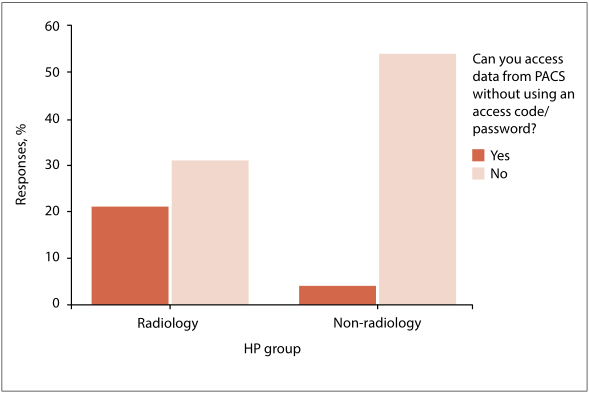
Of course, keeping personal health information protected is important, but what challenges exist to this point in the highly busy and time-sensitive setting of the emergency medical setting? At the end of 2017 Mahlaola and van Dyk published an article on this topic in the
South African Journal of Bioethics and Law that "argues that the minimum standards of effective password use prescribed by the information security sector are not suitable to the emergency-driven medical environment, and that their application as required by law raises new and unforeseen ethical dilemmas. " Using the picture archiving and communication system (PACS) as the primary focus, the authors collected survey responses from Johannesburg-based hospital and radiology departments. After analysis and discussion, they conclude that indeed some ethical quandary exists in the fight to protect patient data using passwords while also trying to save lives, particularly in settings where "seconds count."
Posted on July 24, 2018
By Shawn Douglas
Journal articles

How best can we retrieve value from the rich streams of data in our profession, and introduce a solid, systematic process for analyzing that data? Here Kayser
et al. describe such a process from the perspective of data science experts at Ernst & Young, offering a model that "aims to structure and systematize exploratory analytics approaches." After discussing the building blocks for value creation, they suggest a thorough process of developing analytics approaches to data analytics. They conclude that "[t]he process as described in this work [effectively] guides personnel through analytics projects and illustrates the differences to known IT management approaches."
Posted on July 17, 2018
By Shawn Douglas
Journal articles
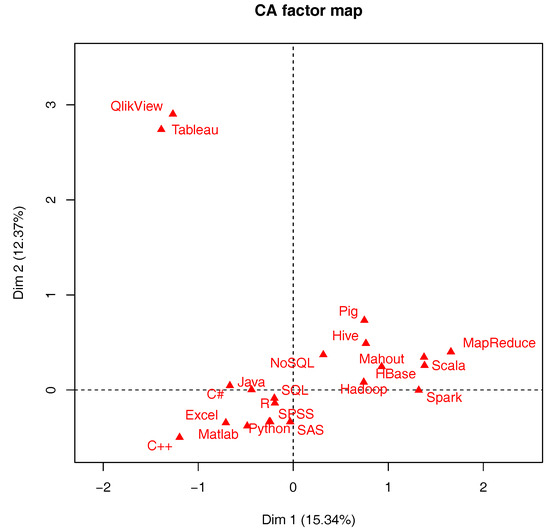
In this 2018 paper by Murtagh and Devlin, a historical and professional perspective on data science and how collaborative work across multiple disciplines is increasingly common to data science. This "convergence and bridging of disciplines" strengthens methodology transfer and collaborative effort, and the integration of data and analytics guides approaches to data management. But education, research, and application challenges still await data scientists. The takeaway for the authors is that "the importance is noted of how data science builds collaboratively on other domains, potentially with innovative methodologies and practice,"
 What can medical librarians do to better support patrons? How can clinical medicine and research librarians work together to foster an environment of improved research cycles and patient outcomes? Bardyn et al. address these concerns and others through a demonstration of what the University of Washington's Translational Research and Information Lab (TRAIL) program has accomplished since its inception. The authors introduce basic concepts in clinical and translational research and then provide background and methodology for how they improved researcher-focused spaces, clinical research support services, and research data management services. They conclude that "initiatives like TRAIL are vital to supporting universities’ clinical data research efforts," noting that "[i]n uniting leading on-campus health sciences organizations, such initiatives build off the strengths of each partner" and encourage new skill sets to be developed to support cross-discipline research on campus.
What can medical librarians do to better support patrons? How can clinical medicine and research librarians work together to foster an environment of improved research cycles and patient outcomes? Bardyn et al. address these concerns and others through a demonstration of what the University of Washington's Translational Research and Information Lab (TRAIL) program has accomplished since its inception. The authors introduce basic concepts in clinical and translational research and then provide background and methodology for how they improved researcher-focused spaces, clinical research support services, and research data management services. They conclude that "initiatives like TRAIL are vital to supporting universities’ clinical data research efforts," noting that "[i]n uniting leading on-campus health sciences organizations, such initiatives build off the strengths of each partner" and encourage new skill sets to be developed to support cross-discipline research on campus.
 So much data is being collected from healthcare recipients, online banking users, online shoppers, and more, and what's worse is we're often letting companies do it without reading the terms of use, according to Rao et al. in this 2018 paper. So what can be done to better preserve our data privacy? The authors first look at four major threats to our data privacy (surveillance, disclosure, discrimination, and personal embracement and abuse), then delve into seven different techniques for preserving the privacy of our data. Giving their pros and cons, the authors finally propose a hybrid solution revolving around the concept of the "data lake" and privacy preserving algorithms.
So much data is being collected from healthcare recipients, online banking users, online shoppers, and more, and what's worse is we're often letting companies do it without reading the terms of use, according to Rao et al. in this 2018 paper. So what can be done to better preserve our data privacy? The authors first look at four major threats to our data privacy (surveillance, disclosure, discrimination, and personal embracement and abuse), then delve into seven different techniques for preserving the privacy of our data. Giving their pros and cons, the authors finally propose a hybrid solution revolving around the concept of the "data lake" and privacy preserving algorithms.
 In this 2018 article by Mulder et al., a broad collective of knowledge and experience is brought together to better shape the competencies required for a modern bioinformatics education program and their training contexts. Need is immense, yet methodologies are diverse, necessitating cooperation to refine core competencies for different groups. The authors describe the development of these competencies and then provide practical use cases for them. They conclude the competencies "provide a basis for the community of bioinformatics educators, despite widely divergent goals and student populations, to draw upon their common experiences in designing, refining, and evaluating their own training programs." However, they also caution that they shouldn't be viewed as "a prescription for a specific set of curricula or curricular standards."
In this 2018 article by Mulder et al., a broad collective of knowledge and experience is brought together to better shape the competencies required for a modern bioinformatics education program and their training contexts. Need is immense, yet methodologies are diverse, necessitating cooperation to refine core competencies for different groups. The authors describe the development of these competencies and then provide practical use cases for them. They conclude the competencies "provide a basis for the community of bioinformatics educators, despite widely divergent goals and student populations, to draw upon their common experiences in designing, refining, and evaluating their own training programs." However, they also caution that they shouldn't be viewed as "a prescription for a specific set of curricula or curricular standards."
 This paper by Malykh and Rudetskiy "discusses different approaches to building a clinical decision support system based on big data," with a focus on non-biased processing methods and their comparative assessments. After an in-depth analysis of methods and objectives, the authors present their findings from the clinical decision support data and their significance. They conclude that case-based and precedent-based approaches each have their advantages--including more accurate recommendations and faster system speeds--but are not without disadvantages. The authors suggest future research is needed to address "problems with optimization of provided metrics, compression of state descriptions, and construction of training procedures."
This paper by Malykh and Rudetskiy "discusses different approaches to building a clinical decision support system based on big data," with a focus on non-biased processing methods and their comparative assessments. After an in-depth analysis of methods and objectives, the authors present their findings from the clinical decision support data and their significance. They conclude that case-based and precedent-based approaches each have their advantages--including more accurate recommendations and faster system speeds--but are not without disadvantages. The authors suggest future research is needed to address "problems with optimization of provided metrics, compression of state descriptions, and construction of training procedures."
 When it comes to longitudinal data, what analysis methods are we using today? How can they be applied to clinical data? In this 2018 paper, Stura et al. look at, for example, repeated data from measuring patient reactions and behaviors to a therapy. yet when analyzing this type of data problems arise; "more robust statistical methods" are required. The authors combine several methods to develop a "numerical tool based on optimization methods coupled with interpolation techniques." They conclude that it provides several benefits, including output displayed as "a (continuous) growth curve, allowing the analysis of each growth function independently of the others. "
When it comes to longitudinal data, what analysis methods are we using today? How can they be applied to clinical data? In this 2018 paper, Stura et al. look at, for example, repeated data from measuring patient reactions and behaviors to a therapy. yet when analyzing this type of data problems arise; "more robust statistical methods" are required. The authors combine several methods to develop a "numerical tool based on optimization methods coupled with interpolation techniques." They conclude that it provides several benefits, including output displayed as "a (continuous) growth curve, allowing the analysis of each growth function independently of the others. "
 In this 2018 paper, El aboudi and Benhilma discuss the data management architectures of healthcare from the perspective of Northern Africa. As part of their discussion, the authors propose "an extensible big data architecture based on both stream computing and batch computing in order to enhance further the reliability of healthcare systems by generating real-time alerts and making accurate predictions on patient health condition." With such an architecture, they conclude that, when implemented well, the healthcare system may be "capable of handling the high amount of data generated by different medical sources in real time."
In this 2018 paper, El aboudi and Benhilma discuss the data management architectures of healthcare from the perspective of Northern Africa. As part of their discussion, the authors propose "an extensible big data architecture based on both stream computing and batch computing in order to enhance further the reliability of healthcare systems by generating real-time alerts and making accurate predictions on patient health condition." With such an architecture, they conclude that, when implemented well, the healthcare system may be "capable of handling the high amount of data generated by different medical sources in real time."
 In this 2018 paper published in Geoscientific Instrumentation, Methods and Data Systems, Fuertes et al. describe and demonstrate the uses of CÆLIS, software designed to simplify the processing, management, and use of atmospheric particulate data. After describing the architecture and database model, the authors describe its functionality and real-world applications. The authors conclude that the automation the software brought to aerosol measurement and analysis has been significant, in that software "has reduced the number of human errors and allowed one to perform more in-depth and exhaustive analysis" while also allowing users to "perform queries and extract data in a fast and very flexible way."
In this 2018 paper published in Geoscientific Instrumentation, Methods and Data Systems, Fuertes et al. describe and demonstrate the uses of CÆLIS, software designed to simplify the processing, management, and use of atmospheric particulate data. After describing the architecture and database model, the authors describe its functionality and real-world applications. The authors conclude that the automation the software brought to aerosol measurement and analysis has been significant, in that software "has reduced the number of human errors and allowed one to perform more in-depth and exhaustive analysis" while also allowing users to "perform queries and extract data in a fast and very flexible way."
 Baseman et al. "conducted an assessment of big data that is available to a [public health agency]—laboratory test results and clinician-generated notifiable condition report data—through its participation in a [health information exchange]" and published their results in Informatics. They identified five major challenges to "secondary use of HIE data for meeting public health communicable disease surveillance needs" and then find ways to turn those challenges into opportunities for the public health system, ultimately optimizing it through various forms of big data analysis and management.
Baseman et al. "conducted an assessment of big data that is available to a [public health agency]—laboratory test results and clinician-generated notifiable condition report data—through its participation in a [health information exchange]" and published their results in Informatics. They identified five major challenges to "secondary use of HIE data for meeting public health communicable disease surveillance needs" and then find ways to turn those challenges into opportunities for the public health system, ultimately optimizing it through various forms of big data analysis and management.
 In this 2018 paper by Irawan and Rachmi, a proposed research data management plan (RDMP) for the university ecosystem is proposed. After introducing the concept of an RDMP and the layout, the authors describe seven major components to their plan, in the form of an assessment form: data collection; documentation and metadata; storage and backup; preservation; sharing and re-use; responsibilities and resources; and ethics and legal compliance. They conclude that the assessment form can help researchers "to describe the setting of their research and data management requirements from a potential funder ... [and] also develop a more detailed RDMP to cater to a specific project's environment."
In this 2018 paper by Irawan and Rachmi, a proposed research data management plan (RDMP) for the university ecosystem is proposed. After introducing the concept of an RDMP and the layout, the authors describe seven major components to their plan, in the form of an assessment form: data collection; documentation and metadata; storage and backup; preservation; sharing and re-use; responsibilities and resources; and ethics and legal compliance. They conclude that the assessment form can help researchers "to describe the setting of their research and data management requirements from a potential funder ... [and] also develop a more detailed RDMP to cater to a specific project's environment."
 In this 2016 paper published in BMC Bioinformatics, Backman and Girke discuss the R/Bioconductor package systemPipeR. Recognizing that the analysis of next-generation sequencing (NGS) data remains a significant challange, the authors turned to the R programming language and the Bioconductor environment to make workflows that were "time-efficient and reproducible." After giving some background and then discussing the development and implementation, they conclude that systemPipeR helps researchers "reduce the complexity and time required to translate NGS data into interpretable research results, while a built-in reporting feature improves reproducibility."
In this 2016 paper published in BMC Bioinformatics, Backman and Girke discuss the R/Bioconductor package systemPipeR. Recognizing that the analysis of next-generation sequencing (NGS) data remains a significant challange, the authors turned to the R programming language and the Bioconductor environment to make workflows that were "time-efficient and reproducible." After giving some background and then discussing the development and implementation, they conclude that systemPipeR helps researchers "reduce the complexity and time required to translate NGS data into interpretable research results, while a built-in reporting feature improves reproducibility."
 A data quality strategy (DQS) is useful for researchers, organizations, and others, primarily because it allows them "to establish a level of assurance, and hence confidence, for [their] user community and key stakeholders as an integral part of service provision." Evans et al. of the Australian National University, recognizing this importance, discuss the implementation of their DQS at the Australian National Computational Infrastructure (NCI), detailing their strategy and providing examples in this 2017 paper. They conclude that "[a]pplying the DQS means that scientists spend less time reformatting and wrangling the data to make it suitable for use by their applications and workflows—especially if their applications can read standardized interfaces."
A data quality strategy (DQS) is useful for researchers, organizations, and others, primarily because it allows them "to establish a level of assurance, and hence confidence, for [their] user community and key stakeholders as an integral part of service provision." Evans et al. of the Australian National University, recognizing this importance, discuss the implementation of their DQS at the Australian National Computational Infrastructure (NCI), detailing their strategy and providing examples in this 2017 paper. They conclude that "[a]pplying the DQS means that scientists spend less time reformatting and wrangling the data to make it suitable for use by their applications and workflows—especially if their applications can read standardized interfaces."
 In this 2018 paper published in Sensors, e Silva et al. "highlight the importance of positioning features for [internet of things] applications and [provide] means of comparing and evaluating different connectivity protocols in terms of their positioning capabilities." Noting a lack of research on the topic of IoT connectivity solutions and how they are localized and tracked, the researchers present what related work there is on the topic, discuss positioning domains and systems, compare IoT technologies and enablers., and provide several case studies. They conclude "that power-domain positioning currently offers the best trade-off between implementation cost and positioning accuracy for low-power systems."
In this 2018 paper published in Sensors, e Silva et al. "highlight the importance of positioning features for [internet of things] applications and [provide] means of comparing and evaluating different connectivity protocols in terms of their positioning capabilities." Noting a lack of research on the topic of IoT connectivity solutions and how they are localized and tracked, the researchers present what related work there is on the topic, discuss positioning domains and systems, compare IoT technologies and enablers., and provide several case studies. They conclude "that power-domain positioning currently offers the best trade-off between implementation cost and positioning accuracy for low-power systems."
 Of course, keeping personal health information protected is important, but what challenges exist to this point in the highly busy and time-sensitive setting of the emergency medical setting? At the end of 2017 Mahlaola and van Dyk published an article on this topic in the South African Journal of Bioethics and Law that "argues that the minimum standards of effective password use prescribed by the information security sector are not suitable to the emergency-driven medical environment, and that their application as required by law raises new and unforeseen ethical dilemmas. " Using the picture archiving and communication system (PACS) as the primary focus, the authors collected survey responses from Johannesburg-based hospital and radiology departments. After analysis and discussion, they conclude that indeed some ethical quandary exists in the fight to protect patient data using passwords while also trying to save lives, particularly in settings where "seconds count."
Of course, keeping personal health information protected is important, but what challenges exist to this point in the highly busy and time-sensitive setting of the emergency medical setting? At the end of 2017 Mahlaola and van Dyk published an article on this topic in the South African Journal of Bioethics and Law that "argues that the minimum standards of effective password use prescribed by the information security sector are not suitable to the emergency-driven medical environment, and that their application as required by law raises new and unforeseen ethical dilemmas. " Using the picture archiving and communication system (PACS) as the primary focus, the authors collected survey responses from Johannesburg-based hospital and radiology departments. After analysis and discussion, they conclude that indeed some ethical quandary exists in the fight to protect patient data using passwords while also trying to save lives, particularly in settings where "seconds count."
 How best can we retrieve value from the rich streams of data in our profession, and introduce a solid, systematic process for analyzing that data? Here Kayser et al. describe such a process from the perspective of data science experts at Ernst & Young, offering a model that "aims to structure and systematize exploratory analytics approaches." After discussing the building blocks for value creation, they suggest a thorough process of developing analytics approaches to data analytics. They conclude that "[t]he process as described in this work [effectively] guides personnel through analytics projects and illustrates the differences to known IT management approaches."
How best can we retrieve value from the rich streams of data in our profession, and introduce a solid, systematic process for analyzing that data? Here Kayser et al. describe such a process from the perspective of data science experts at Ernst & Young, offering a model that "aims to structure and systematize exploratory analytics approaches." After discussing the building blocks for value creation, they suggest a thorough process of developing analytics approaches to data analytics. They conclude that "[t]he process as described in this work [effectively] guides personnel through analytics projects and illustrates the differences to known IT management approaches."
 In this 2018 paper by Murtagh and Devlin, a historical and professional perspective on data science and how collaborative work across multiple disciplines is increasingly common to data science. This "convergence and bridging of disciplines" strengthens methodology transfer and collaborative effort, and the integration of data and analytics guides approaches to data management. But education, research, and application challenges still await data scientists. The takeaway for the authors is that "the importance is noted of how data science builds collaboratively on other domains, potentially with innovative methodologies and practice,"
In this 2018 paper by Murtagh and Devlin, a historical and professional perspective on data science and how collaborative work across multiple disciplines is increasingly common to data science. This "convergence and bridging of disciplines" strengthens methodology transfer and collaborative effort, and the integration of data and analytics guides approaches to data management. But education, research, and application challenges still await data scientists. The takeaway for the authors is that "the importance is noted of how data science builds collaboratively on other domains, potentially with innovative methodologies and practice,"
















